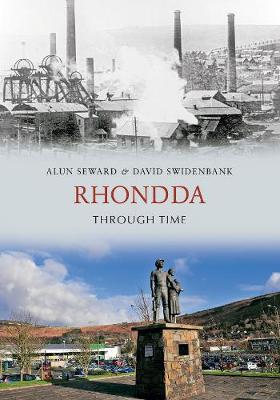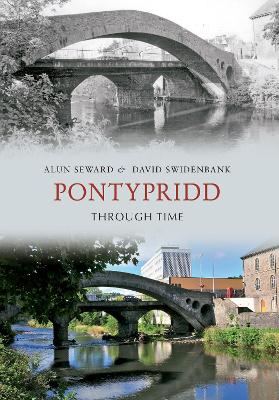Through Time
4 total works
Bridgend Through Time is a unique insight into the illustrious history of this part Wales. Reproduced in full colour, this is an exciting examination of its well-known streets and famous faces, and what they meant to the people of this area throughout the 19th and into the 20th Century. Looking beyond the exquisite exterior of these well-kept photos, readers can see the historical context in which they are set, and through the author's factual captions for every picture, and carefully-selected choice of images, the reader can achieve a reliable view of the local history. There is something for everyone here, whether they have lived in the area all their lives, or whether they are just visiting Bridgend for the first time. Bridgend Through Time also shows how photography has continually evolved to keep up with an ever changing society.
Rhondda' - even now, the name evokes the turbulent times when Rhondda (actually two valleys, the Fawr and Fach) was synonymous with the deep-mining of steam coal. This is a story of pioneering deep-mining and unbridled capitalism: the prospecting of two valleys, unfettered by health and safety, amid divisive industrial relations and scarce health-care. The result fired railways, steam-powered shipping and the engines of the Industrial Revolution across the world. Using a mixture of historical and modern photographs, coloured by personal testimony and memories, this book reveals the vibrant, turbulent, often tragic record of Rhondda: from pastoral vale via 'black gold'-rush to grimy industrial prime, followed by the twentieth-century economic slide, the demise of all its fifty-three collieries and today's valleys - a mainly residential landscape of green hills.
The casual visitor travelling through the towns and villages that make up the Rhondda Valleys today would find it hard to imagine the once lush mountainsides and forests for which this part of Glamorgan was known. Few images exist of this forgotten rural landscape in the early part of the nineteenth century, before it was carved away in the wake of the country's demand for coal. For many years the name Rhondda has become a stereotyped image of collieries and poor quality housing surrounded by slag heaps. With coal no longer king, the people of the Rhondda Valleys have had to adapt to new ways of working and living. The images in this book look at how the towns and villages of the Rhondda Valleys have moved on through these years of dramatic social and industrial change, losing the old stereotype but not forgetting its heritage on the way.
Pontypridd Through Time portrays the history of this iconic market town that sits at the gateway to three historic valleys of the South Wales coalfield. It also illustrates some of the changes that have contributed across centuries to the everyday life of a place that transformed from pastoral, drovers' river-crossing into a town that embodied a thriving conduit to capitalist mineral prospecting on a prodigious scale. A hamlet transformed from its rural obscurity in the eighteenth century to ride the wild, mechanical horses of the industrial fuel revolution to become a bustling market town. A town encapsulating all the excesses of the saga of the South Wales' coal and railway bonanza. It survives into the twenty-first century - to outlast the pits that gave it life and reared it. Pontypridd today - fighting back to rise again.



